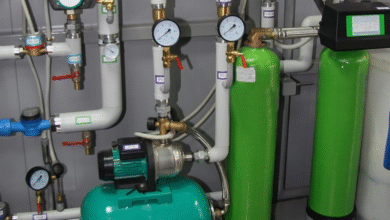When Water Turns Unsafe: Understanding Lead Concerns in Michigan Homes

Water is supposed to be the simplest, purest thing we put into our bodies. Yet, in certain parts of the country, people hesitate before filling a glass from the kitchen tap. Michigan, unfortunately, has found itself in the headlines more than once for the wrong reasons when it comes to drinking water. The problem isn’t about taste or cloudiness—it’s about something far more invisible and dangerous: lead.
The word alone stirs up anxiety, and for good reason. Lead contamination isn’t something you can see swirling around in your cup. It doesn’t have a strong smell, and it won’t give away its presence with a funny taste. Instead, it hides quietly, sometimes for years, until health problems slowly surface. That’s why the conversation around lead in water Michigan keeps resurfacing, often with an urgency that can’t be ignored.
Why Lead Is Such a Problem
Lead is not a modern invention. It’s an old material, widely used in pipes and plumbing fittings for decades. Back then, no one thought too much about it. Cities across the U.S. relied on lead service lines to deliver water. The problem? Lead doesn’t just sit still—it can leach into water, especially when old pipes corrode or water chemistry isn’t managed properly.
Unlike a temporary contaminant, lead sticks around. Once it’s in the body, it builds up over time, affecting organs and especially the brain. For children, the consequences can be devastating—lowered IQ, learning difficulties, behavioral issues. Adults aren’t immune either, facing higher risks of hypertension, kidney problems, and reproductive complications.
The scariest part is that there’s no “safe” level of lead in drinking water. Even trace amounts can be harmful, and that’s what makes this a problem that requires action, not just awareness.
How Lead Gets Into Your Home
You might assume that public water treatment plants should handle the issue. And in many ways, they do—utilities treat and monitor water to prevent corrosion. But the weak link is often the last mile: the pipes that run between the street and your house, and even the plumbing inside your walls. If those pipes or solder joints are made of lead, then the treated water can still pick up contamination right before you drink it.
Older neighborhoods are particularly vulnerable. Michigan has thousands of homes built before the 1980s, a time when lead pipes and fixtures were practically standard. Combine that with the fact that many households aren’t even sure what materials make up their service lines, and you have a puzzle that’s difficult to solve without testing.
Practical Steps for Families
When faced with something invisible and harmful, most people feel a little stuck. But the truth is, there are practical steps that make a real difference.
One of the most straightforward actions is installing a lead removal water filter. These aren’t your average pitcher filters that mostly improve taste. Certified filters for lead are tested under strict standards to reduce the heavy metal to safe levels. Some are attached directly to faucets, while others fit under sinks or even as whole-house systems. The key is checking the certification—look for NSF/ANSI Standard 53 or 58, which specifically mention lead reduction.
Of course, filters require maintenance. Cartridges need replacing, sometimes more often than expected if your water is particularly contaminated. But compared to the risks, the effort is worth it.
Testing: The First Step to Peace of Mind
Before jumping to solutions, it helps to understand what’s actually in your water. Many homeowners wonder how to test for lead in water without turning it into a complicated science project. Thankfully, options exist.
You can pick up at-home lead test kits, which usually involve collecting a water sample and sending it to a certified lab. Some utilities even offer free testing, especially in areas where lead service lines are common. It’s not unusual to take multiple samples—for example, one after water sits overnight in the pipes, and another after running the tap for a while. That way, you get a clearer picture of how much lead is leaching and when.
The process might feel tedious, but the results provide clarity. If lead shows up, you can take targeted action. If it doesn’t, you gain reassurance that your plumbing isn’t secretly poisoning your household.
The Bigger Picture
Lead in drinking water is not just a personal problem; it’s a community one. Michigan has already seen the impact of delayed responses and the cost of letting infrastructure age without replacement. Entire neighborhoods have had to switch to bottled water. Cities have scrambled to replace service lines, a process that is both expensive and time-consuming.
But in a strange way, the crisis has also pushed forward important conversations about public health and accountability. More residents are asking tough questions, more utilities are rethinking water chemistry management, and more cities are committing to replacing every last lead service line. That’s progress, even if it comes slower than we’d like.
Closing Thoughts
Clean water should never be a luxury. It’s easy to take it for granted, but moments of crisis remind us just how fragile our systems can be. For Michigan families, lead has become a symbol of mistrust and resilience at the same time. People have learned to test, to filter, to advocate, and to demand better.
At the end of the day, the goal is simple: water that nourishes without harming, water you can pour into a child’s cup without second-guessing. And while the headlines may fade, the responsibility to protect that glass of water remains—with each homeowner, each community, and each policy maker willing to take action.




